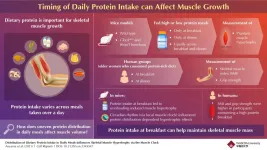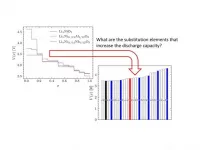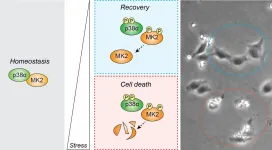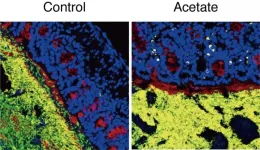(Press-News.org) Proteins constitute an essential dietary component that help in the growth and repair of the body. Composed of long chains of amino acids, proteins promote the growth of skeletal muscles, the group of muscles that help us move. Humans have been aware of the benefits of proteins for long. However, recent studies have shown that having the right amount of protein at the right time of the day is essential for proper growth. This is called 'Chrononutrition,' in which when you eat is as important as what and how you eat.
The reason behind this is the body's internal biological clock, called the 'circadian rhythm.' This rhythm is followed by all cells and controls life functions like metabolism and growth. Interestingly, protein digestion and absorption have been found to fluctuate across day and night according to this clock. Moreover, earlier studies have reported that intake of protein at breakfast and lunch promotes skeletal muscle growth in adults. However, details on the effect of the time of protein intake on muscle growth and function have remained elusive till date.
Fortunately, researchers from Waseda University, led by Professor Shigenobu Shibata, recently endeavored to understand the effect of the distribution of protein intake through the day on muscles. They fed laboratory mice two meals per day containing either high (11.5% by proportion) or low (8.5% by proportion) protein concentrations. The researchers noted that protein intake at breakfast induced an increase in muscle growth, determined by assessing induced hypertrophy of the plantaris muscle in the leg, when compared with the effects of protein intake at dinner. Specifically, the ratio of muscle hypertrophy determined against the growth of the control muscle was 17% higher in mice fed 8.5% protein at breakfast, than that in mice fed 11.5% protein at dinner, despite the former group consuming a low proportion of protein overall. They also found that intake of a type of protein called the BCCA, short for branched-chain amino acids, early in the day increased the size of skeletal muscles specifically.
To confirm the association of these effects with the workings of the circadian rhythm, the researchers next engineered whole-body mutant ClockΔ19 or muscle-specific Bmal1 knockout mice lacking the genes that control the biological clock. They repeated diet distribution experiments on these mice but did not observe similar muscle change, which confirmed the involvement of the circadian rhythm in muscle growth in the context of protein intake.
Excited about the findings of their study published in a recent issue of the Cell Reports, Prof. Shibata emphasizes, "Protein-rich diet at an early phase of the daily active period, that is at breakfast, is important to maintain skeletal muscle health and enhance muscle volume and grip strength."
To check if their findings were applicable to humans, the team recruited women in their study and tested if their muscle function, determined by measuring skeletal muscle index (SMI) and grip strength, varied with the timing of the protein-rich diet consumed. Sixty women aged 65 years and above who took protein at breakfast rather than at dinner showed better muscle functions, suggesting the possibility of the findings to be true across species. Additionally, the researchers also found a strong association between SMI and the proportion of protein intake at breakfast relative to total protein intake through the day.
Prof. Shibata is hopeful that the findings of their study will lead to a widespread modification in the current diet regime of most people across the Western and Asian countries, who traditionally consume low amounts of protein at breakfast. He therefore stresses, "For humans, in general, the protein intake at breakfast averages about 15 grams, which is less than what we consume at dinner, which is roughly 28 grams. Our findings strongly support changing this norm and consuming more protein at breakfast or morning snacking time."
It seems, a simple change in our dietary regime can be our key to ensuring healthy muscles!
INFORMATION:
Reference
Authors: Shinya Aoyama (1,2,5), Hyeon-Ki Kim (1,2), Rina Hirooka (1), Mizuho Tanaka (1), Takeru Shimoda (1), Hanako Chijiki (1), Shuichi Kojima (1), Keisuke Sasaki (1), Kengo Takahashi (1), Saneyuki Makino (1), Miku Takizawa (1), Masaki Takahashi (1), Yu Tahara (1), Shigeki Shimiba (4), Kazuyuki Shinohara (5), Shigenobu Shibata, Ph.D. (1)
Title of original paper: Distribution of dietary protein intake in daily meals influences skeletal muscle hypertrophy via the muscle clock
Journal: Cell Reports
DOI: https://doi.org/10.1016/j.celrep.2021.109336
Affiliations:
(1) Laboratory of Physiology and Pharmacology, School of Advanced Science and Engineering, Waseda University
(2) Organization for University Research Initiatives, Waseda University
(3) Institute for Liberal Arts, Tokyo Institute of Technology
(4) Department of Health Science, School of Pharmacy, Nihon University
(5) Department of Neurobiology & Behavior, Graduate School of Biomedical Sciences, Nagasaki University
About Waseda University
Located in the heart of Tokyo, Waseda University is a leading private research university that has long been dedicated to academic excellence, innovative research, and civic engagement at both the local and global levels since 1882. The University ranks number one in Japan in international activities, including the number of international students, with the broadest range of degree programs fully taught in English. To learn more about Waseda University, visit https://www.waseda.jp/top/en
Chemical synapses transmit information within the nervous system. When a presynaptic cell is electrically excited, synaptic vesicles fuse with the presynaptic membrane causing messenger substances within the vesicles to be released into the synaptic cleft. These then bind to receptors in the postsynaptic cell where they trigger an electrical signal once again. The temporal and spatial sequence of the incoming signals determines how information is processed and transmitted in the brain. In order to sustain their function in the long term, chemical synapses need to recycle synaptic vesicles to make them available for renewed signal transmission. Professor Carsten Duch and Professor Martin Heine and their respective ...
"The project's main objective is to integrate a certain degree of automation, so that an operator can control a small fleet of up to 10 drones from a single ground station," says Luis E. Moreno, LABYRINTH's coordinator and researcher at the UC3M's Robotics Lab. "The idea is that the operator indicates the mission to be undertaken (for example, monitoring traffic in a particular area) and the system automatically converts this mission into a set of routes that each drone has to follow, automatically calculating alternative routes when necessary," he explains. In addition ...
The economic and environmental pros and cons of melting Arctic ice creating shorter shipping routes through the polar region are weighed up in ground-breaking research from UCL experts in energy and transport.
They conclude that policy makers must properly assess the environmental trade-offs and costs in addition to the commercial benefits and opportunities in Arctic shipping. The authors also want to see more incentives to drive technological developments that will accelerate the uptake of green fuels and technologies.
The Arctic is the fastest-warming region on the planet.
Shorter Arctic shipping routes, which mean less fuel used are already used by a handful of ships, when areas of the Arctic ice melt ...
Ishikawa, Japan - Powering everything from smartphones to electric cars, lithium-ion batteries (LIBs) have evolved markedly with advances in technology and revolutionized our world. The next step in the progress of technology is developing even better batteries to power electronic devices for longer durations. One promising technique for increasing battery performance involves the atomic substitution of positively charged ions or "cations" in the cathode material. However, doing so systematically for different substituent cations to determine the ideal ones experimentally is complex and expensive, leaving us with simulations as the only viable option for narrowing down the choices.
Several studies have reported an improved battery life and ...
This summer, if you see a butterfly with wings that are blue on top with orange spots underneath, you may have crossed paths with a male European Common Blue (or Polyommatus icarus), a newly introduced species in Canada.
Could it be a fluke? Probably not, according to a group of researchers from the University of Ottawa who have taken a close look at this captivating blue creature. They are in fact the first to study its ecology.
"The results of our study suggest that the Polyommatus icarus (P. icarus) could become widespread in the future since it prefers urban areas," said uOttawa PhD student Stephanie Rivest, who is the first ...
The final stage of cataclysmic explosions of dying massive stars, called supernovae, could pack an up to six times bigger punch on the surrounding interstellar gas with the help of cosmic rays, according to a new study led by researchers at the University of Oxford. The work will be presented by PhD student Francisco Rodríguez Montero today (19 July) at the virtual National Astronomy Meeting (NAM 2021).
When supernovae explode, they emit light and billions of particles into space. While the light can freely reach us, particles become trapped in spiral loops by magnetic shockwaves generated during the explosions. Crossing back and forth through shock fronts, these particles are accelerated almost to the speed of light and, on escaping the supernovae, are thought ...
Living organisms are often exposed to stress stimuli generated either by external or internal factors, and they need to respond accordingly. At a cellular level, stress usually triggers the activation of survival pathways that contribute to the recovery of cell homeostasis. However, when stress is too high, a process of cell death is initiated that eliminates the damaged cell.
Scientists led by ICREA researcher Dr. Angel Nebreda, head of the Signalling and Cell Cycle laboratory at IRB Barcelona, have identified an important role of the p38-MK2 pathway in determining cell fate in response to stress.
"Our ...
Computer vision technology is increasingly used in areas such as automatic surveillance systems, self-driving cars, facial recognition, healthcare and social distancing tools. Users require accurate and reliable visual information to fully harness the benefits of video analytics applications but the quality of the video data is often affected by environmental factors such as rain, night-time conditions or crowds (where there are multiple images of people overlapping with each other in a scene). Using computer vision and deep learning, a team of researchers led by Yale-NUS College Associate Professor of Science (Computer Science) Robby Tan, who is also from the National University of Singapore's (NUS) Faculty of Engineering, ...
Researchers at the RIKEN Center for Integrative Medical Sciences (IMS) have discovered that acetate, a major metabolite produced by some intestinal bacteria, is involved in regulating other intestinal bacteria. Specifically, experiments showed that acetate could trigger an immune response against potentially harmful bacteria. The findings, published in the scientific journal Nature, will lead to the development of new ways to regulate the balance of intestinal bacteria.
You may be surprised to know that 40 trillion important bacteria live in our intestines. They help keep us healthy by producing essential nutrients and eliminating foreign pathogens. On the other ...
Some COVID-19 patients who experience acute respiratory failure respond by significantly increasing their respiratory effort - breathing faster and more deeply
There is concern among some doctors that this level of respiratory effort can lead to further damage to these patients' lungs.
Working with an international team of leading intensive care clinicians, engineering researchers at the University of Warwick have used computational modelling to provide new evidence that high respiratory efforts in COVID-19 patients can produce pressures and strains inside the lung that can result in injury.
The impact of high breathing efforts on the lungs of patients suffering with acute respiratory failure due to COVID-19 ...







